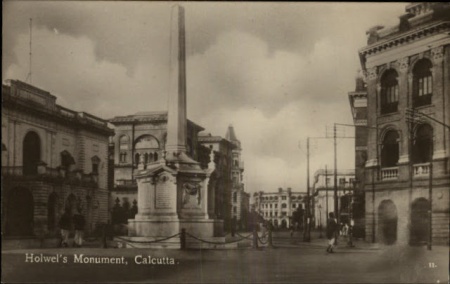 |
| First mint of Calcutta puronokolkata.com |
 | ||||
| first silver mint, Calcutta East India co, wordpress.com |
The East India company after opening its trade post in Calcutta (Kolkata) with legal permit from the Mogul ruler prospered well over a short period of time in mercantile trade in the mid 1700s. The development of township around their trade post and further improvements in their trade activities had put the company in a better position and there was ample scope for further expansion of their line of business. When they became a force to reckon with over Bengal, they opened the first mint in Kolakata. The other major mints at Bombay (gold and silver only) and Madras (copper only) did not begin production until 1837. The minting work is a strenuous one and requires machines such as the steam engines, coining and cutting presses, draw bench, melting furnaces etc., besides steady supply of metals, be they copper, silver or gold. Most importantly safety and security factors ought to be taken care of seriously.
 | |
| 1840 Queen Victoria. EIC, one quarter rupee coin. india coin.wordpress.com |
The following are the interesting historical facts:
01. The East India Company established the first Calcutta Mint (Government of India Mint, Kolkata) in 1757 after a treaty with the Mogul ruler and his resident governor in Bengal.
 |
| 1835 British East India Co.quarter Anna rare colonial coin.pinterest.com |
03. British company wanted in the 1820s to increase production capacity to 200,000 rupees a day
 |
04. Commonly called Copper Mint came up in 1860 in new built buildings in the north of the Calcutta Mint grounds. Production of coins began in 1865. This mint operated till 1952 later new Indian Mint was built in Alipore.
 |
| 1839 Queen Victoria silver coin, Calcutta mint lunaticg.blogspot.com |
 |
| Queen victoria 1862 silver coin, British India. indiacoin.wordpress.com |
07. The rupee was 0.98 fine silver and had a weight of one Bengal Sicca (179 2/3 troy grains). The sicca weight had local divisions of 16 annas with each anna being further divided into 12 pice.
 |
| 1840 Queen Victoria.EIC one quarter rupee coin. india coin.wordpress.com |
09. The coins struck in the new mint building (Gillet Ship Building Establishment) were identical to those from Murshidabad and hence the identity of mint caused lots of confusion.
10.Till the closure of Murshidabad mint - 1777 confusion prevailed. 1780 saw new expansion and additional buildings
11. In 1790 new rules were in force. In mid 1790s the first coins struck bore the mint name A'linagar Kalkatta; then later simply Kalkutta.
(a). After April 10th, 1794, only the san 19 sikka rupees were available and received at the public treasuries, or issued by them
(b). Additional mints at Dacca, Patna and Murshidabad came up to help people convert their old coins or bullion into sikka rupees; coins minted at these places were similar to those of 19 san sikka rupees coined at Calcutta.
(c). The silver coins struck at the four mints were indeed near identical. The product of each mint was identified by small dots among the beads on the coin obverses (Pridmore, 1975, p. 241)
(d). This system was useful till the end of 1795 when the three other mints were issuing gold Mohurs with lower quality gold and the silver from Patna and Murshidabad. By 1799, all other mints Dacca in 1797, Patna in 1796 and Murshidabad in 1799 were closed as the task of removal of old coins in circulation was fully achieved.
12. In early 1820s steam powered mint machinery ( made in Birmingham, England) capable of producing 200,000 rupees a day was used for minting operations on a new plot near the quay on the Hoogley river. The machinery arrived in October 1823, but the production began in 1830.
 |
| Kolkata mint. www.marudhararts.com30 |
 |
| One rupee coins,Calcutta mint in 1916, 1918, 1919 and 1920, no mint marks: exclusivecoins.blogspot.com |
 |
| Mint: Kolkata (Calcutta).1910 King Edward VII. www.chiefacoins.com |
14. During the World War I (1916 and 1918)
Calcutta mint produced bronze penny and ½ penny coins for Australia. After WWI, the Royal Mint at Melbourne produced the first bronze coin in Australia in 1919, using the master tools shipped from Kolkata. Australian pennies from 1920,it is believed, were struck from either Indian or London dies.
15. The foundation work for a new mint was completed at New Alipore in 1930s. Because of WWII the building work got delayed. The building was completed in early 1950s after independence from the British.
Ref:
Thurston, Edgar 1893, Note on the history of the East India Company coinage from 1753-1835, Baptist Mission Press, Calcutta
https://en.wikipedia.org/wiki/India_Government_Mint,_Kolkata
http://collections.museumvictoria.com.au/articles/187









.webp)